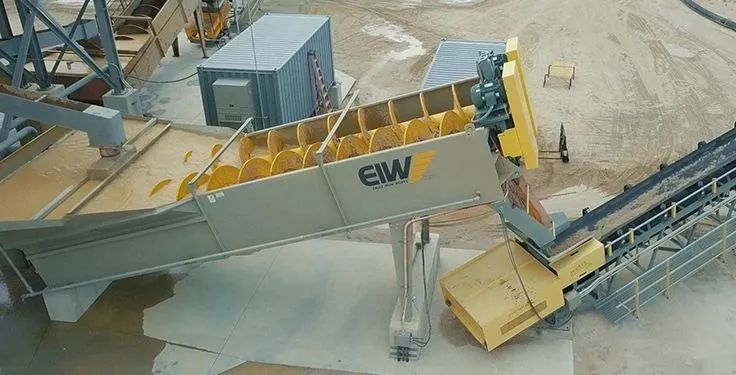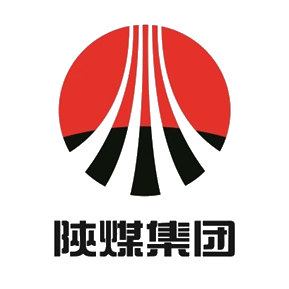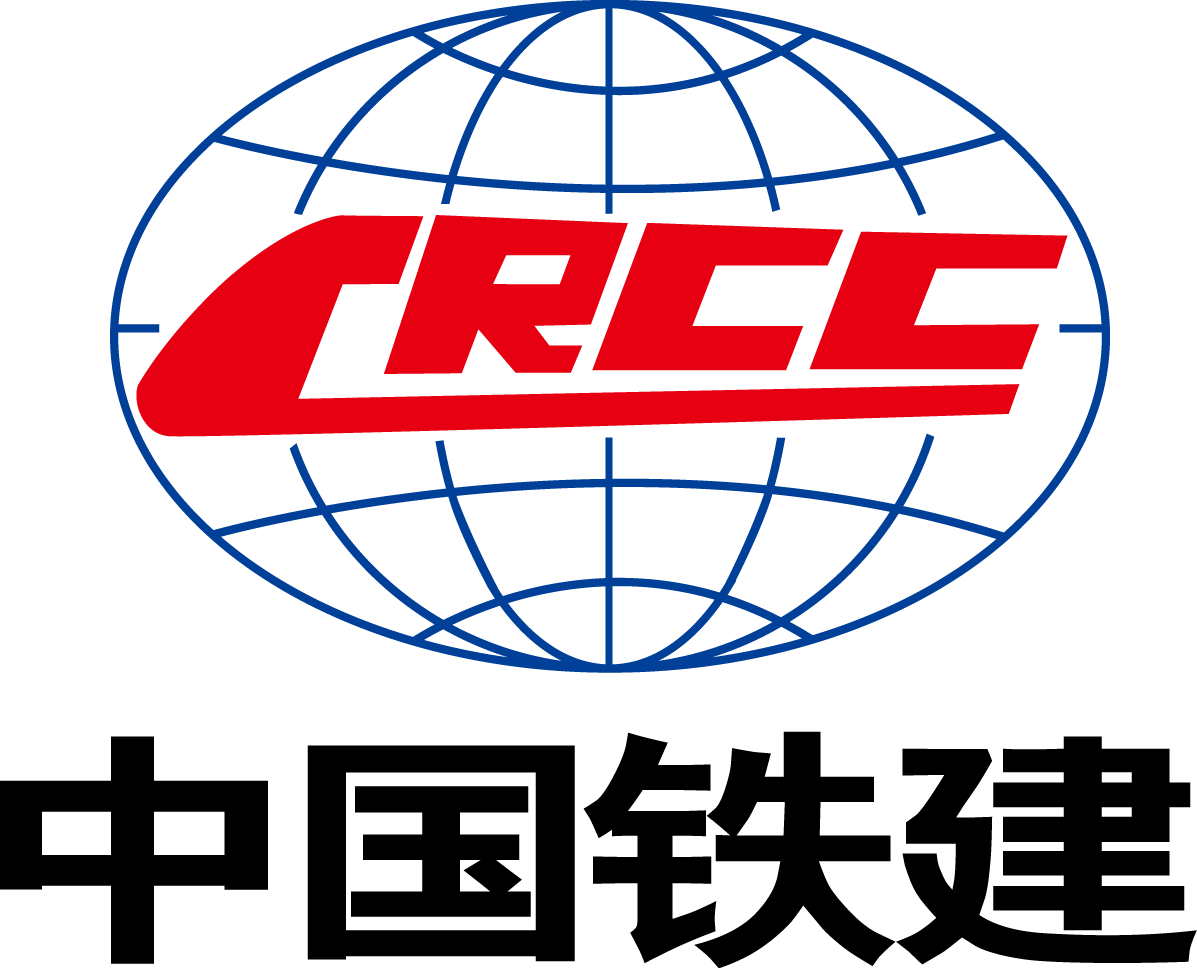洗砂机如何规范操作,看看国外怎么做
发布日期:2023-09-27 浏览次数: 次
洗砂机如何规范操作,看看国外怎么做
编者按
中国砂石协会协会融媒体中心联合国际部推出“全球砂石专题”,定期编译国外最新砂石资讯和技术进展,以及国外砂石行业的经验成果、标准规范等,以飨砂石同仁!
今天分享一篇题为《洗砂机最佳操作规范》的文章。
洗砂机最佳操作规范(Best operational practices for fine material washers)
洗砂机是一种小马力的砂石脱水设备,用于建筑骨料湿洗厂的砂石洗涤、分级、脱水。
它们有单螺杆和双螺杆两种配置,根据砂固体容量和水体积流量来选择。
洗涤是洗砂机的主要功能。它是通过输送轴的连续旋转和溢出废水的速度来实现的。旋转轴使进料滚动和翻滚,提供颗粒间的摩擦,从而使许多有害涂料从砂产品中去除并随废水一起排出。
洗砂机的第二个功能是分类。分类是通过调节流经洗砂机后部和侧面堰的水量来实现的。
为了实现最大的物料截留,三个堰应设置为彼此水平,以提供较低的溢流速度。平静的水池区域是有效分类的关键。这使得产品大小的固体沉淀出来,并且任何细颗粒与废物一起溢出。
洗砂机的第三个功能是脱水。脱水是通过将产品从清洗桶输送到倾斜的干燥甲板区域来完成的,这使得大部分游离水从材料中排出。在干甲板区域的一侧使用紧密间隙弧形板,在另一侧使用排水槽也有助于脱水。
Fine material washers are low-horsepower sand dewatering devices used for washing, classifying and dewatering sand in construction aggregate wet washing plants.
They are available in single- or double-screw configurations, with selection determined by sand solids capacity and water volume flow.
Washing is the primary function of a fine material washer. It is achieved by the continuous rotation of the conveyor shaft and the velocity of the overflowing wastewater. The rotating shaft causes feed material to roll and tumble, providing particle-on-particle attrition that allows many deleterious coatings to be removed from the sand product and discharged with the wastewater.
The second function of a fine material washer is classification. Classification is achieved by adjusting the volume of water that flows over the back and side weirs of the washer tub.
To achieve maximum material retention, the three weirs should be set level to each other to provide a low-overflow velocity. A calm pool area is key to efficient classification. This allows the product-sized solids to settle out and any fine particles to overflow with the waste.
The third function of a fine material washer is dewatering. Dewatering is accomplished by conveying the product from the washer tub up the inclined dry deck area, which allows much of the free water to drain from the material. The use of a close-clearance curved plate on one side of the dry deck area and a drainage trough on the other also aids in dewatering.
操作最佳实践
洗砂机是一种行之有效的清洗、分级和脱水砂子的方法。
虽然它们已在湿法加工厂中使用了数十年,并且许多骨料生产商都熟悉它们的工作原理,但以下是一些操作技巧和最佳实践,可帮助您充分利用洗砂机:
1、减慢螺杆转速,以便加工更细的砂。螺杆转速由通过50目筛网孔径的物料百分比决定。较细的材料需要更多的时间在洗涤桶中沉淀,因此需要较慢的螺杆速度。

减慢螺杆的速度可以加工更细的砂子
螺杆速度可以通过用1500除以通过50目筛网孔径的百分比来计算。
例如,如果15%的材料通过50目,则螺杆应以100%的速度运行以获得最佳操作。如果砂子稍细,并且含有20%或30%通过50目的砂子,则螺杆应分别以75%和50%的速度较慢运行,以获得最佳操作。
如果轴速度过高,细小的材料会积聚在洗砂机桶的角落。发生这种情况是因为螺杆移动太快,无法将细砂输送至排料口。以超速运行几个小时后,会看到桶角落堆积,以及整个水池区域充满细砂,最终溢出产品大小的细砂而造成浪费。
2、考虑添加更多处理步骤。当砂料中含有大量负200目或0.075毫米物料时,需要执行额外的处理步骤。
一般来说,当负200目材料的含量超过12%到15%时,应该考虑采用两步法。
两步法涉及两个洗涤阶段,可以用两个螺杆或用给螺杆进料的水力旋流器来完成。
3、确保有足够的水。水对于清洗骨料是必不可少的,您需要确保为您的设备提供适量的水以实现最佳运行。
根据经验,洗砂机每分钟需要50加仑的水才能每小时清除1吨的淤泥。
4、考虑增加上升电流。上升的水流可以通过水池区域下方的注水进行微调。
添加洁净水可以改善分级过程。引入向上上升的水流有助于使超细颗粒保持悬浮状态,同时产品尺寸的颗粒可以沉降出来,作为产品从桶区域输送出去。
Operational best practices
Fine material washers are a tried-and-true method for washing, classifying and dewatering sand.
While they have been used in wet processing plants for decades and many aggregate producers are familiar with how they work, here are some operational tips and best practices to help you get the most out of a fine material washer:
1. Slow the screw speed for finer sand processing. Screw speed is determined by the percent passing 50 mesh. Finer material needs more time to settle out in the washer tub, so slower screw speeds are necessary.

Slowing the speed of the screw will allow finer sand to be processed. Photo: EIW
Screw speed can be calculated by dividing 1,500 by the percent passing 50 mesh. For example, if 15 percent of the material is passing 50 mesh, the screw should be operated at 100 percent speed for optimum operation. If the sand is slightly finer and contains 20 or 30 percent passing 50 mesh, the screw should be run slower at 75 and 50 percent speed, respectively, for optimum operation.
With excessive shaft speed, fine material can build up in the corner of the washer tub. This occurs because the screw is moving too fast for the fine sand to be conveyed toward the discharge. After a few hours of operation at excessive speeds, you will see the resulting tub corner buildup, as well as the entire pool area fill with fine sand that eventually overflows product-sized fine sand to waste.
2. Consider adding more processing steps. Additional processing steps are required when a sand feed has a high amount of minus 200 mesh or 0.075-mm material.
Generally, when you have more than 12 to 15 percent of minus 200-mesh material, you should consider a two-step process. A two-step process involves two stages of washing and can be accomplished with two screws or with a hydrocyclone feeding a screw.
3. Ensure you have enough water. Water is imperative for washing aggregate material, and you need to be sure your equipment is supplied with the appropriate amount of water for optimal operation.
As a rule of thumb, fine material washers require 50 gallons of water per minute to remove 1 ton per hour of silt.
4. Consider adding rising current. Rising current allows for fine-tuning via water injection beneath the pool areas.
The addition of clean water improves the classification process. Introducing an upward-rising current of water helps to keep the ultra fines in suspension while the product-sized particles can settle out to be conveyed out of the tub area as product.
5、调平堰。调平洗砂机上的堰可以优化性能。如果想除去少量多余的细粉,可以升高侧堰,降低后堰。这使得洗砂机后部溢出的速度更快,以去除多余的负200目的细粉。
6、使用冲洗水减少堆积。在洗砂机的干燥甲板区域加水可能会导致干燥的砂子排放到输送机上并进入产品堆中。
水会冲掉积聚的任何细沙,从而在沙子沿螺旋输送时,形成一个清晰的通道,以便水从沙子中排出。
7、确保物料正确进入洗砂机。重要的是要有一个平静的水池区,以确保最大限度地保留细粉,这样砂子就会进入产品堆,而不是与流向沉淀池的废水一起溢出。
洗涤桶进料区域的湍流过多会导致过量的负200目的细粉损失,并且可能还会导致一些正200目的细粉损失。带有速度破坏箱的进料槽或水槽允许产生一些湍流,但不会太多。
8、确保您的设备得到适当润滑。轴承的正确润滑是确保最佳性能和意外停机的关键。
根据每周运行40小时计算,后外侧轴承应每三个月或运行500小时后润滑一次。请记住,过度润滑会损坏密封件并堵塞排水口。
最后的想法
遵循这八个操作技巧和最佳实践将有助于您的洗砂机顺利运行,减少制砂的停机时间并延长正常运行时间。
(本文信息由EIW (Eagle Iron Works)提供。)
5. Leveling the weirs. Leveling the weirs on a fine material washer optimizes performance. If you want to get rid of a small amount of excess fines, raise the side weirs and lower the back weir. This allows more velocity to overflow the back of the washer to remove excess minus 200-mesh fines.
6. Use flush water to decrease buildup. Adding water to the dry deck area of a fine material washer can result in drier sand discharging onto the conveyor and into the product pile.
How? The water flushes out any fine sand that accumulated to allow a clear channel for the water to drain from the sand as it is conveyed up the screw.
7. Ensure you have proper feed entry into a fine material washer. It’s important to have a calm pool area to ensure maximum fines retention so sand makes it to the product pile rather than overflow with the wastewater destined for the settling pond.
Too much turbulence in the feed area of the washer tub can cause the loss of excess minus 200-mesh fines and, potentially, some plus 200-mesh fines, as well. A feed chute or flume with a velocity break box allows for some turbulence, but not too much.
8. Make sure your equipment is properly lubricated. Proper lubrication of bearings is key to ensure optimal performance and unexpected downtime.
Based on a 40-hour-per-week operation, the rear outboard bearing should be lubricated every three months or after 500 operating hours. Keep in mind that overgreasing can damage the seals and plug the drainage port.
Final thought
Following these eight operational tips and best practices will help your fine material washer run smoothly – with less downtime and more uptime for sand production.
Information for this article provided by EIW (Eagle Iron Works).
来源:中国砂石协会翻译整理
分享:
中国砂石协会
2023年09月27日
- 会员企业
- 理事单位












